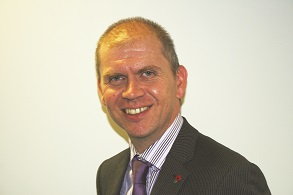Feature / Outcome and risk
Stockport is well on the way to establishing
a new payment model that links to outcomes and shares risk across the system.

Stockport’s health and social care economy has been developing a new system sustainability plan since the start of 2015. Like many areas, it is putting in place new models of care – and has made good progress. But where it is arguably ahead of many other areas is in thinking through the detail of how payment can be linked to real outcomes and how financial risk can be shared across the whole system.
Working together, the five local health and care organisations (CCG, acute and community provider, mental health provider, GP federation and local council) have developed a plan – Stockport together – to deliver integrated services that increase independence and reduce the need for hospital services.
New models of care will be developed to serve the whole community, although the initial focus has been on older people with complex needs. The approach is being developed as a multi-specialty community services provider and Stockport was named as one of the key test sites in NHS England’s vanguard programme.
Structural benefit
The focus is prevention at scale underpinned by transformed out-of-hospital care based on integrated neighbourhood teams. While all systems are looking to work in a more integrated way, Stockport’s relatively simple and well-defined structure gives it an advantage. There is one commissioner, which is coterminous with one local authority; one GP federation (Viaduct Care); one acute and community foundation trust (Stockport); and one mental health FT (Pennine Care).

This helps, but Mark Chidgey, chief finance officer at Stockport Clinical Commissioning Group (right), says what they are trying to do is still massively challenging. The starting point was leaders coming together to look at future needs and challenges as a system rather than single organisations. ‘We’d always set separate strategies, or been led by our regulators to set strategies that didn’t align,’ he says.
The new system-wide approach has prompted some refreshing statements – the acute trust chief executive acknowledged the hospital needs to be smaller in the future, while the commissioner recognised the importance of a strong acute provider.
Four business cases have been published alongside a summary economic case, setting out key pathway changes.
For example, an ambulatory care business case sets out to address the fact that Stockport currently admits around 30% more patients to hospital than similar systems, many of which have ambulatory care sensitive (ACS) conditions. New model plans will establish collaborative triage in primary and secondary care, as well as co-locating a primary care ambulatory illness team in the emergency department and extending the hours of the ambulatory care unit.
As well as setting out the planned service changes, Stockport has done a lot of work on enablers such as a single patient record system accessible by all care providers.
Mr Chidgey says there are already signs of a positive impact, with the system being one of the few to see a reduction in non-elective admissions in 2016/17.
Getting the money right to support the new system is vital, as all parts of it currently face financial challenges. The pressures on local authorities are well known. The CCG delivered a 0.7% planned surplus in 2016/17, short of the national 1% requirement. And Stockport NHS FT ended the year in deficit, albeit improving on its control total. ‘The challenge in 2017/18 – most immediately at Stockport FT – is really significant,’ says Mr Chidgey. However, he says the difference to previous years is that this is now seen as a system problem to be tackled collectively across health and social care.
The system has made a lot of progress on a future payment system based on a capitated budget and linked to outcomes.
‘Without the outcome part, it is just a block contract, and that won’t drive improvement,’ says Mr Chidgey. ‘The risk is that it would just mean things will stagnate.’
With support from consultants BDO and Outcomes Based Healthcare, the area has developed 38 outcome measures (25 clinical and 13 personal) to supplement existing NHS Constitution targets. These will form the basis for how a more strategic commissioner will describe requirements in future contracts.
The approach could involve a far greater proportion of contract value than existing CQUIN incentives. ‘We’ve not agreed the split yet – it could be anything from 60:40 to 90:10 – but it has to be the right level to support change,’ says Mr Chidgey.
Should the outcome target improvement be moderate and linked to a large proportion of overall spend, for example, or much more aspirational and linked to a smaller amount of spend?
The capitation budget baseline will be set using historic spend levels adjusted for the impact of the business cases. After looking at more complex ways to share risk of over-performance, the agreed proposal to the health and social care economy from its finance leaders is a simple three-way split – with any overspends or gains within the scope of the business cases shared equally by the CCG, the local authority and the provider alliance.
Resource distribution between the providers and between, say, acute and community services would be ‘primarily for the providers to determine’, says Mr Chidgey. However, some of the outcome measures would have a clear influence on this – personal outcome measures around keeping people in their own homes, for example, or enabling people with mental health problems to return to work.
The payment model is not there yet. There are key decisions to be made around how much should be linked to outcomes, what happens to funds that are not paid out if outcomes aren’t achieved, and how different providers should share in any unpaid elements. But the system is well on the way to a payment model that actively supports its more integrated service delivery.
Related content
We are excited to bring you a fun packed Eastern Branch Conference in 2025 over three days.
This event is for those that will benefit from an overview of costing in the NHS or those new to costing and will cover why we cost and the processes.